The Blood Star review
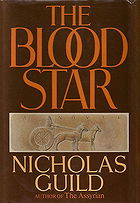 Posted : 11 years, 10 months ago on 12 July 2013 08:46
(A review of The Blood Star)
Posted : 11 years, 10 months ago on 12 July 2013 08:46
(A review of The Blood Star)The Blood Star is the sequel to The Assyrian, and continues the adventures of the exiled hero Tiglath Ashur as he travels through Egypt, Phoenicia, Greece, and Italy. This is grand melodrama of the first order, full of vivid battle scenes, devious plots, attempted assassinations, and surprising twists. Tiglath's complicated relationship with his brother the king is fascinating and doesn't necessarily move in expected directions. Both The Assyrian and The Blood Star have great cinematic potential, I would love to see them made into movies. Heck, I would just love to read more historical fiction novels with this much sheer bad-assery (yes, I realize that's not an actual word).
 0 comments, Reply to this entry
0 comments, Reply to this entry
The Assyrian review
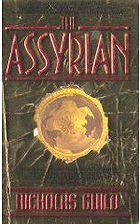 Posted : 11 years, 10 months ago on 12 July 2013 08:23
(A review of The Assyrian)
Posted : 11 years, 10 months ago on 12 July 2013 08:23
(A review of The Assyrian)Epic historical melodrama set in Ancient Mesopotamia?
Check.
Bloody battle scenes that read like Sam Peckinpah meets Epic of Gilgamesh?
Check.
Lusty harlots? Conniving eunuchs? Nefarious kings? Tragic love? Creepy blind prophets spouting omens? A bold but obstinate main character who always chooses the hard path in any situation?
All of the above and more.
PS: If you like this book, it's well worth the effort to track down the sequel, The Blood Star.
Check.
Bloody battle scenes that read like Sam Peckinpah meets Epic of Gilgamesh?
Check.
Lusty harlots? Conniving eunuchs? Nefarious kings? Tragic love? Creepy blind prophets spouting omens? A bold but obstinate main character who always chooses the hard path in any situation?
All of the above and more.
PS: If you like this book, it's well worth the effort to track down the sequel, The Blood Star.
 0 comments, Reply to this entry
0 comments, Reply to this entry
Dictionary of Mythology Folklore and Symbols; Parts 1 & 2 review
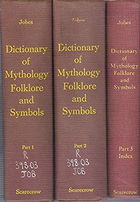 Posted : 11 years, 10 months ago on 1 July 2013 10:13
(A review of Dictionary of Mythology Folklore and Symbols; Parts 1 & 2)
Posted : 11 years, 10 months ago on 1 July 2013 10:13
(A review of Dictionary of Mythology Folklore and Symbols; Parts 1 & 2)This a gem for the library of any mythology-lover. Although it was written back in the early 60s, it still represents one of the most comprehensive overviews of world religions and symbolism I've ever come across. Mrs. Jobes covers just about everything: the Greek/Roman myths, Christian, Islam, Mithraic, Celtic, Zoroastrian, Buddhism, Hindu beliefs, those trippy Siberian tribes, Norse, Lithuanian demons, Algonquin, Bushmen, Aborigine, the Polynesian tribes, South American deities, the language of flowers.. the list goes on and on. Plus, she makes things incredibly helpful by pointing out similarities across religions, such as the ubiquitous sun hero theme (Llew Llaw, Heracles, Ra, Moses). Jobes is thorough, meticulous, yet vastly accessible. Highly recommended.
 0 comments, Reply to this entry
0 comments, Reply to this entry
Smithsonian Intimate Guide to Human Origins review
 Posted : 11 years, 10 months ago on 30 June 2013 11:06
(A review of Smithsonian Intimate Guide to Human Origins)
Posted : 11 years, 10 months ago on 30 June 2013 11:06
(A review of Smithsonian Intimate Guide to Human Origins)This is a very readable and visually appealing introduction to our evolutionary roots. Packed with illustrations, photographs, and discussions of contemporary theories (example: Did humans and neanderthals interbreed?), it reads fairly fast.
 0 comments, Reply to this entry
0 comments, Reply to this entry
From Lucy to Language: Revised, Updated, and Expanded review
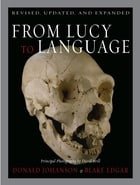 Posted : 11 years, 10 months ago on 28 June 2013 10:33
(A review of From Lucy to Language: Revised, Updated, and Expanded)
Posted : 11 years, 10 months ago on 28 June 2013 10:33
(A review of From Lucy to Language: Revised, Updated, and Expanded)I really adored this. A coffeetable book on paleoanthropology? It's like a dream come true. And it is gorgeous. David Brill's photographs of the skulls and other fossils have an almost 3-D feel, showing the diverse textures, colors, and patina of each specimen. Some books on early hominids have beautifully constructed artist's renditions of what these individuals might have looked like, this one leaves it to the reader's imagination.
The text is by Donald Johanson, the paleoanthropologist who discovered the famous "Lucy" skeleton. He gets pretty darn technical in his descriptions of the fossils, delving into the minutiae of teeth, mandibles, fragments of thigh bone and so on... but it's an effective reminder that the science of paleoanthropology requires a great deal of time-consuming, meticulous sleuth-work. I found it fascinating, but I understand that others might find it a bit of a trudge.
Final verdict: Beautiful to look at, extremely detailed. If you're looking for a more accessible or quick-reading summary of early humans and their kin, try The Smithsonian Intimate Guide to Human Origins
The text is by Donald Johanson, the paleoanthropologist who discovered the famous "Lucy" skeleton. He gets pretty darn technical in his descriptions of the fossils, delving into the minutiae of teeth, mandibles, fragments of thigh bone and so on... but it's an effective reminder that the science of paleoanthropology requires a great deal of time-consuming, meticulous sleuth-work. I found it fascinating, but I understand that others might find it a bit of a trudge.
Final verdict: Beautiful to look at, extremely detailed. If you're looking for a more accessible or quick-reading summary of early humans and their kin, try The Smithsonian Intimate Guide to Human Origins
 0 comments, Reply to this entry
0 comments, Reply to this entry
Soldiering: Diary Rice C. Bull: The Civil War Diary of Rice C. Bull review
 Posted : 12 years, 9 months ago on 4 August 2012 08:46
(A review of Soldiering: Diary Rice C. Bull: The Civil War Diary of Rice C. Bull)
Posted : 12 years, 9 months ago on 4 August 2012 08:46
(A review of Soldiering: Diary Rice C. Bull: The Civil War Diary of Rice C. Bull)A top-notch addition to any Civil War library, this memoir was written by the author decades after the war, using his original diary as a foundation. Despite the time that passed, Bull doesn't leave anything out (and considering what he went through, I'm sure his memories remained sharp and indelible). He covers the day to day army routine one expects from any decent Civil War diary, the drudgery of camp, marches, drills, and inclement weather. However, where Bull's story becomes extraordinary is when he gets shot through the jaw at the battle of Chancellorsville (Antietam). He ends up in a filthy log cabin with other wounded Union soldiers and they suffer through several days of rain, sweltering weather, lack of food, and increasing sickness. His description of that hellish situation is gruesome but riveting. One of the best Civil War accounts I've read.
 0 comments, Reply to this entry
0 comments, Reply to this entry
What I Saw in California review
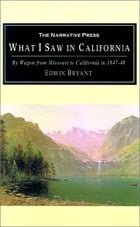 Posted : 12 years, 9 months ago on 4 August 2012 08:43
(A review of What I Saw in California)
Posted : 12 years, 9 months ago on 4 August 2012 08:43
(A review of What I Saw in California)Although this book is called "What I Saw in California", at least half of it covers the author's journey west from Missouri. That portion is an engrossing glimpse into the trials and tribulations of a wagon train. Bryant was a medical student, and he had several opportunities to test out his knowledge in the field. His descriptions of the changing landscape are detailed and fascinating.
However, once he reaches California he provides an invaluable portrait of a country in flux. The Mexicans were losing control of the state and American immigrants were pouring in. Bryant found himself caught up in General John C. Fremont's military expedition to take the town of Santa Barbara. It turned out the soldiers had a lot more to fear from the local geography and a truly nasty storm than from Santa Barbara's inhabitants themselves. Bryant's account of the rough, wet night in which horses, mules, and artillery tumbled down steep slopes is memorable.
However, once he reaches California he provides an invaluable portrait of a country in flux. The Mexicans were losing control of the state and American immigrants were pouring in. Bryant found himself caught up in General John C. Fremont's military expedition to take the town of Santa Barbara. It turned out the soldiers had a lot more to fear from the local geography and a truly nasty storm than from Santa Barbara's inhabitants themselves. Bryant's account of the rough, wet night in which horses, mules, and artillery tumbled down steep slopes is memorable.
 0 comments, Reply to this entry
0 comments, Reply to this entry
Narrative of the Life of Henry Box Brown review
 Posted : 12 years, 9 months ago on 4 August 2012 06:56
(A review of Narrative of the Life of Henry Box Brown)
Posted : 12 years, 9 months ago on 4 August 2012 06:56
(A review of Narrative of the Life of Henry Box Brown)This book contains the amazing but true tale of a Virginia slave who literally mailed himself to freedom in a claustrophobic wooden crate. It was quite an ordeal. The crate was helpfully labeled THIS SIDE UP, but this was ignored several times in his long journey. For 27 hours, he was jostled, turned upside down, and generally knocked about, but he took it all with extraordinary fortitude.
Brown's account caused controversy when it was first published. Because he revealed the details of his plan, it meant other slaves couldn't use the same ingenious method to escape. Still, it's an interesting story and an excellent example of slave narrative literature.
Brown's account caused controversy when it was first published. Because he revealed the details of his plan, it meant other slaves couldn't use the same ingenious method to escape. Still, it's an interesting story and an excellent example of slave narrative literature.
 0 comments, Reply to this entry
0 comments, Reply to this entry
Jane Eyre (Signet Classics) review
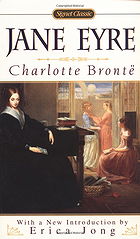 Posted : 12 years, 9 months ago on 2 August 2012 09:52
(A review of Jane Eyre (Signet Classics))
Posted : 12 years, 9 months ago on 2 August 2012 09:52
(A review of Jane Eyre (Signet Classics))Sweet and gentle governess tames brooding English earl with a terrible secret. Romantic fiction owes a lot to likable little Jane Eyre. Anyway, this novel perhaps just a little cloying at times, like the literary version of a Starbucks cake pop. I have to admit I prefer the far crunchier dark chocolate flavor of Wuthering Heights by Charlotte's sister, Emily.
(Yes, I eat my books. Don't you?)
(Yes, I eat my books. Don't you?)
 0 comments, Reply to this entry
0 comments, Reply to this entry
Mansfield Park (Signet Classics) review
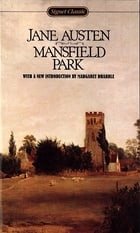 Posted : 12 years, 9 months ago on 2 August 2012 08:49
(A review of Mansfield Park (Signet Classics))
Posted : 12 years, 9 months ago on 2 August 2012 08:49
(A review of Mansfield Park (Signet Classics))This Cinderella-like tale by Jane Austen is very probably her least accessible novel, because the heroine(Fanny) is not witty or pertinacious, and if anything comes off a bit like a disapproving schoolmarm. However, Fanny provides an excellent contrast to the rich, spoiled, and morally rudderless relatives she lives with. She may not be a social butterfly, but she's got a good solid foundation of personal integrity. If this makes her a bit boring, well, that's the way the crumpet crumbles. Now, if you'll excuse me, I'm going to go read a racy spy thriller.
 0 comments, Reply to this entry
0 comments, Reply to this entry
 Login
Login
 Home
Home 3 Lists
3 Lists 120 Reviews
120 Reviews Collections
Collections